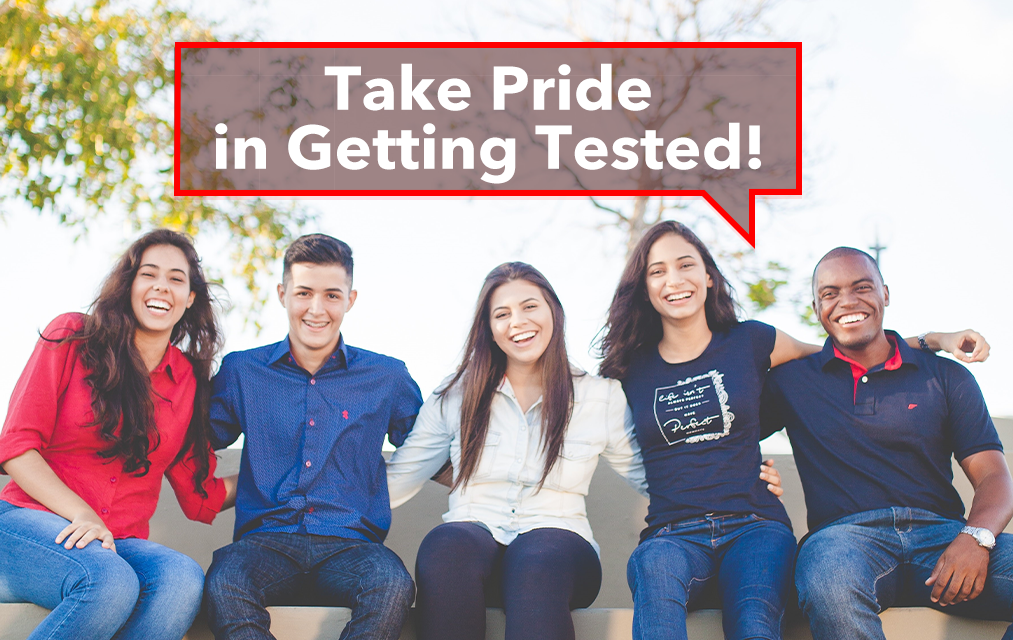Take Pride In Getting Tested!

June is a special month for the LGBTQ community. Known as Pride Month, celebrations take place across the world to celebrate the community as well as its contributions to the world. However, another important day in June that doesn’t get as much attention is National HIV Testing Day, on June 27th.
While HIV can impact anyone, it’s a disease that has special meaning for the LGBTQ community. So, while many people are preparing their celebrations for June, it’s also important to remember National HIV Testing Day.
Why Is Testing Important?
What are some of the main reasons that all sexually active people should commit to regular HIV testing?
It still disproportionately affects the LGBTQ community. In the early years of HIV/AIDS, it was largely considered a “gay” disease because it was primarily gay men being infected. While we know better today, LGBTQ populations are still radically more affected by the condition than others. For example, gay and bisexual men make up 2% of the U.S. population, but 55% of all recorded cases of HIV. The transgender community deals with similar statistics. As a result, sexually active LGBTQ individuals are automatically at a higher risk of exposure. Also, discrimination against the LGBTQ community can lead to behaviors that increase the risk of spread even further.
You want to protect your partners. By nature, HIV can be present for a long time without every manifesting visible symptoms. As a result, there’s a possibility a person could contract HIV while single, then enter a relationship and unknowingly pass it onto their partner. The only way to prevent such a scenario would be to get regular testing.
Early detection impacts treatment. There are a variety of HIV treatments available that can help significantly improve your quality of life across the board. In some cases, if done properly, the viral load may be reduced to negligible amounts. However, after infection progresses past a certain point, the effectiveness of these treatments is greatly reduced. As a result, it’s essential to get regular testing to ensure you can get treatment as soon as possible.


How Should I Go About Getting Tested?
With this said, the act of getting tested isn’t easy for everyone. Many members of the LGBTQ community feel marginalized and isolated and may not have loved ones/friends to turn to with their concerns about a possible HIV infection. Because of this, it’s essential to know all the methods available in terms of HIV testing. Here are the places people can be tested:
- Your local healthcare provider. Note that HIV testing is covered by health insurance without a copay, as the ACA(Affordable Care Act) requires.
- Health clinics/community health centers. These are especially valuable for those without insurance who may need free treatment.
- STD/sexual health clinics.
- Your local health department.
- Family planning clinics like Planned Parenthood.
- VA centers for veterans.
- Substance abuse treatment programs. IV drug users also represent a large chunk of the HIV-positive population.
- Community-based organizations. Different regions have organizations specifically designed to provide services like HIV testing. Many of these also focus on the LGBTQ community, so be sure to see what’s near you.
- Some pharmacies.
If you’re struggling to find something available to you, take some time and do your research. There are resources available for any income bracket or insurance coverage. In addition, many of these options also provide plenty of discretion if you are worried about your sexual habits or activities. If you are sexually active with multiple partners, you want to try and get tested every 3 to 6 months.
One benefit working in favor of the modern LGBTQ community is that there are more support systems than ever for LGBT issues as well as STD/HIV treatment if needed. However, you can’t take advantage of many of those resources unless you start the ball rolling by getting tested. Remember, there’s no shame in being who you are and t keeping yourself safe.

